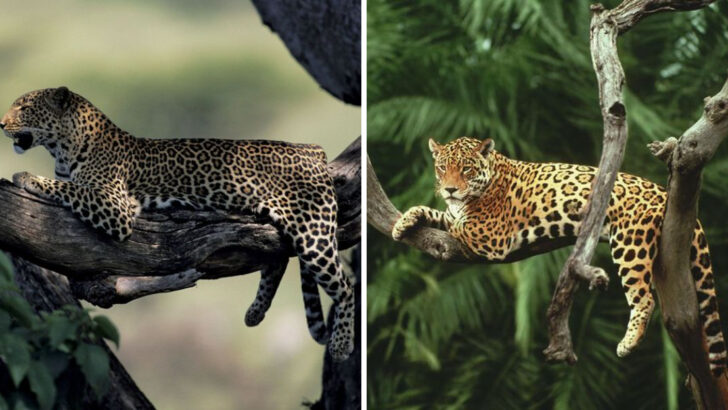Leopards and jaguars—they look like twins separated at birth, but trust me, they couldn’t be more different. If you’ve ever scratched your head wondering which big cat you’re staring at, you’re not alone. These two fierce felines share a spotted coat and a reputation for stealth, but their secrets lie in the details. From head shape to hunting style, each has a signature look and personality waiting to be uncovered. Get ready to sharpen your wildlife detective skills. Whether you’re a nature lover or just curious, these 8 simple clues will have you spotting the difference like a pro. No more confusing one for the other—let’s dive into the wild world of leopards and jaguars, and unlock the mysteries behind their spots!
Body Build
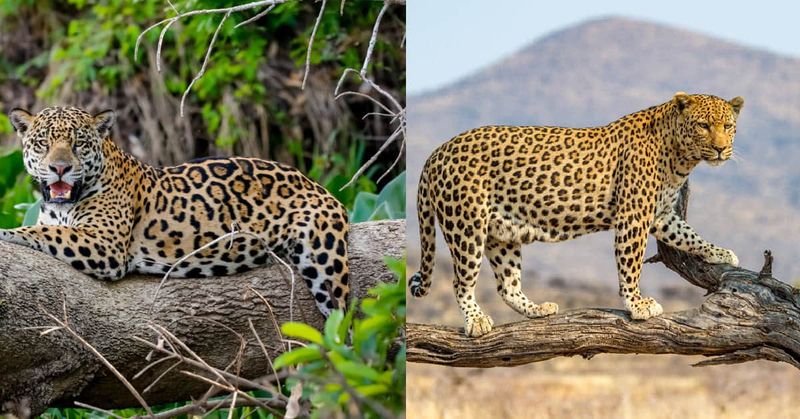
Jaguars, with their robust and powerful build, exude an aura of strength and confidence. Their stocky bodies are designed for taking down prey with sheer force. Leopards, on the other hand, boast a more svelte and agile appearance. This lithe build allows them to navigate their surroundings with grace and stealth. Understanding this fundamental difference is crucial for identifying these big cats in their natural habitats. While both are apex predators, their differing physiques reflect their unique hunting styles and environmental adaptations. The next time you spot one, take a moment to appreciate their distinct physical forms.
Head Shape
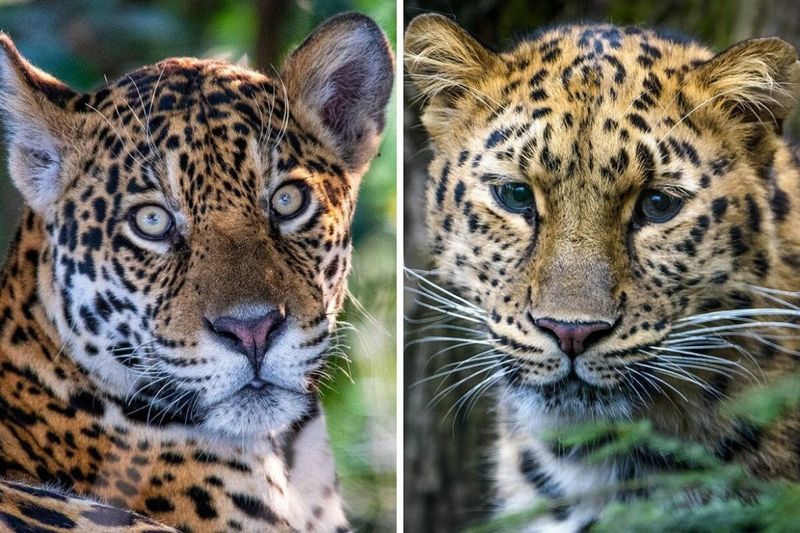
The head shape of these cats is a striking indicator of their identity. Jaguars possess a broad, rounded head complemented by a powerful jawline. This feature plays a crucial role in their ability to crush skulls of prey. Leopards, however, present a narrower and more elongated face, suited to their stealthy hunting strategy. This contrast in head shape is not just aesthetic; it’s a testament to their evolutionary paths. By observing these facial traits, one can glimpse into the lives of these enigmatic creatures. Such differences remind us of the diversity within the big cat family.
Spot Patterns
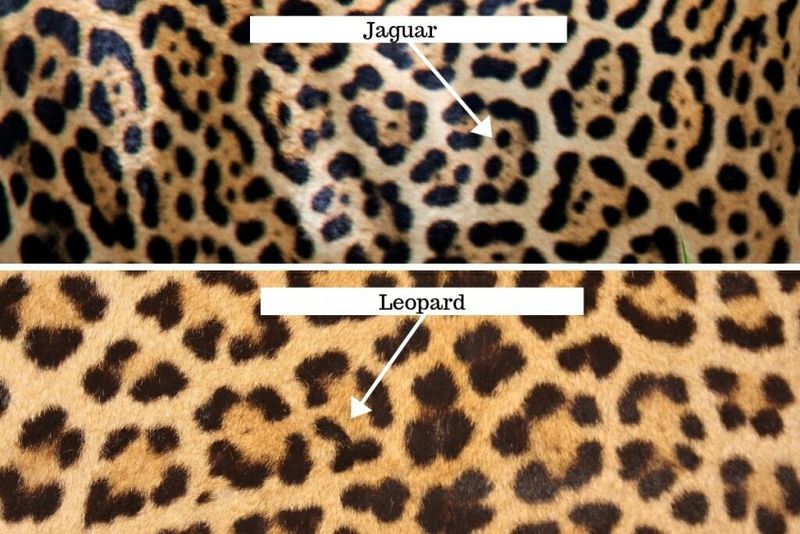
Spot patterns on these majestic cats are akin to fingerprints in humans—unique and telling. Jaguars feature large rosettes with thick lines, often encasing smaller spots within. This intricate pattern is not only beautiful but aids in camouflage within dense forests. Leopards, by contrast, display smaller rosettes lacking internal spots, ideal for blending into the African savanna. These patterns serve as perfect disguises in their respective environments. Recognizing these differences enriches our wildlife experience. Much like a painter’s signature, these spots define the identity of each species, showcasing nature’s artistic flair.
Size
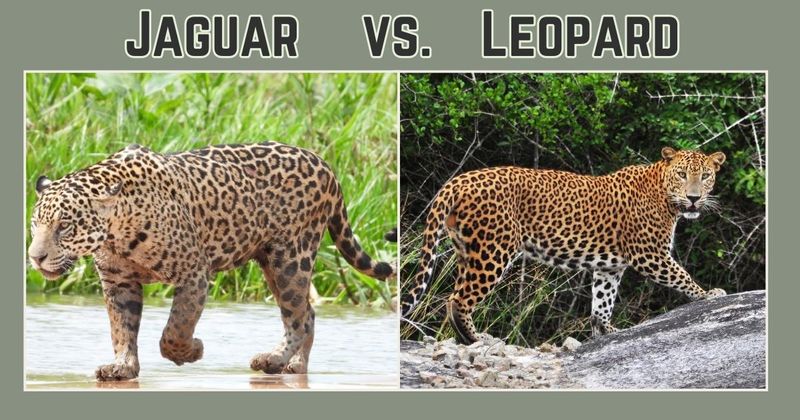
Size can be a simple yet effective way to differentiate between these two big cats. Jaguars are generally larger and possess a heftier frame, making them the giants of the South American rainforests. Leopards, while still formidable, are smaller and more lightweight, which aids in their arboreal lifestyle. This size difference isn’t merely a matter of numbers; it reflects their ecological roles and hunting strategies. By understanding their size dynamics, we gain insight into their life in the wild. Observing their size can reveal much about their habitat preferences and predatory behaviors.
Tail Length
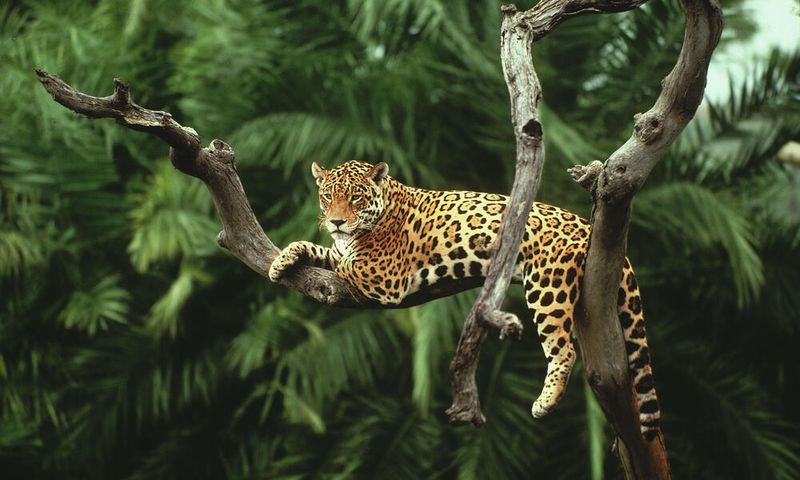
The length of a big cat’s tail is more than just about aesthetics; it’s about function and adaptation. Leopards possess long, flexible tails that assist them in maintaining balance as they navigate through the trees. This attribute is essential for their arboreal lifestyle. Jaguars, with their shorter, sturdier tails, rely less on tree climbing and more on strength and power. This difference highlights their distinct hunting techniques and ecological adaptations. By paying attention to their tails, one can infer not only their identity but also their lifestyle and environment. It’s a subtle yet significant distinction.
Habitat
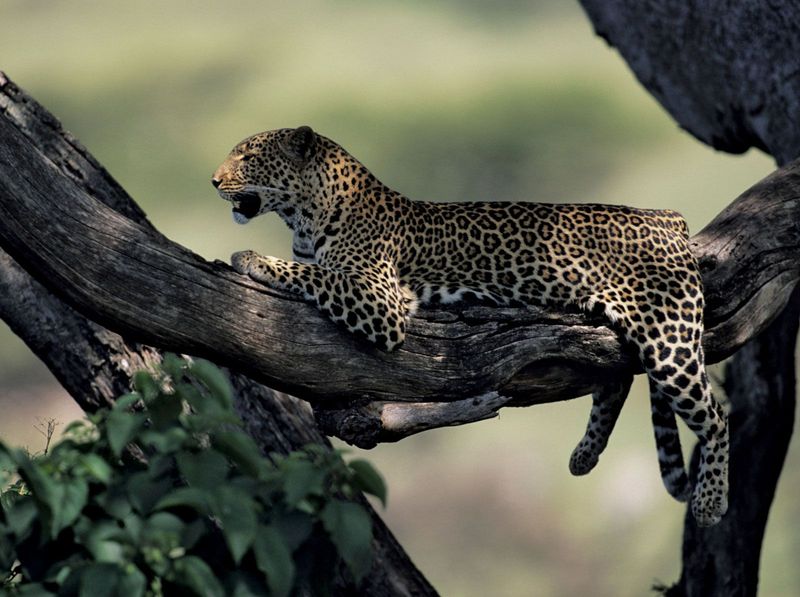
Habitat plays a pivotal role in distinguishing between these two remarkable cats. Jaguars are synonymous with the dense, humid rainforests of Central and South America. These lush landscapes are perfect for their ambush hunting style. In contrast, leopards thrive in the diverse terrains of Africa and parts of Asia, from savannas to mountainous regions. Their adaptability to different environments is unmatched. Understanding these habitats provides insight into their behavior and lifestyle. Observing them in situ highlights the evolutionary adaptations that have honed their survival skills in distinct ecological niches.
Behavior
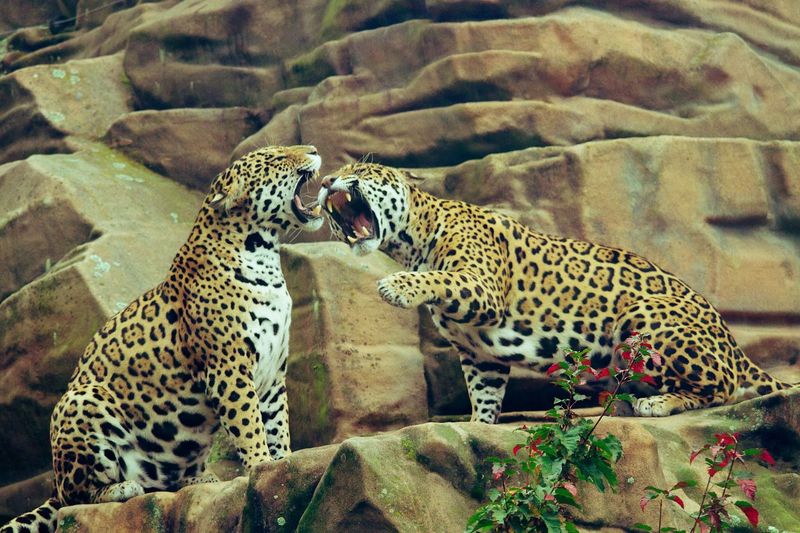
Behavioral traits provide a window into the lives of these big cats. Jaguars are known for their affinity with water, often hunting in rivers and swamps, showcasing their exceptional swimming skills. Leopards, conversely, are master climbers, frequently seen dragging their prey up trees to avoid scavengers. These behaviors are not arbitrary but shaped by their environments and prey availability. By observing these actions, one gains a deeper understanding of their survival strategies. Each behavior tells a story of adaptation and resilience, painting a vivid picture of their life in the wild.
Roar and Vocalizations
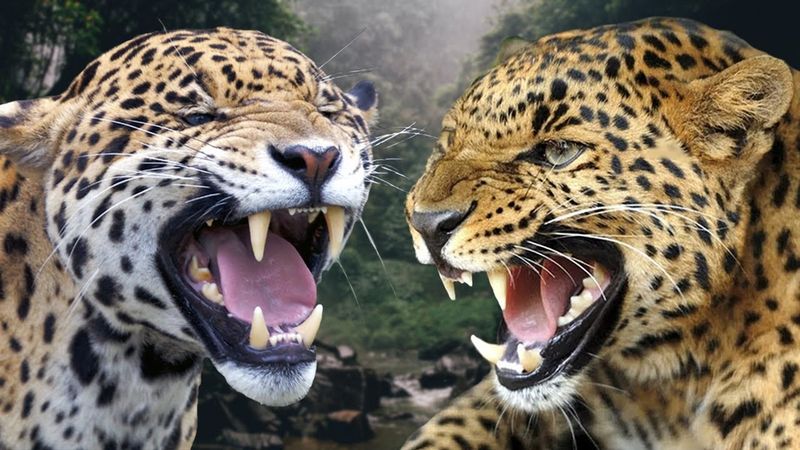
The vocalizations of these majestic creatures are as distinct as their appearances. Jaguars emit a deep, guttural roar, evoking a sense of power and dominance. This unique call resonates through the jungles, marking their presence. Leopards, on the other hand, produce a raspier, cough-like sound, often heard in the African night. These vocalizations are more than mere sounds; they are essential communication tools within their species. Each roar and call reflects their personality and territorial nature. Listening to these vocal signatures offers an auditory glimpse into their world, enhancing our connection with these fascinating animals.

